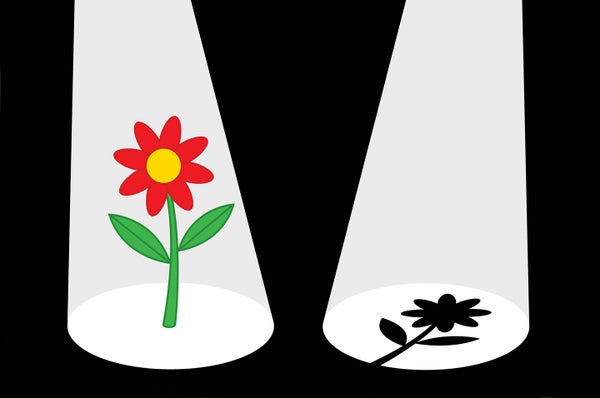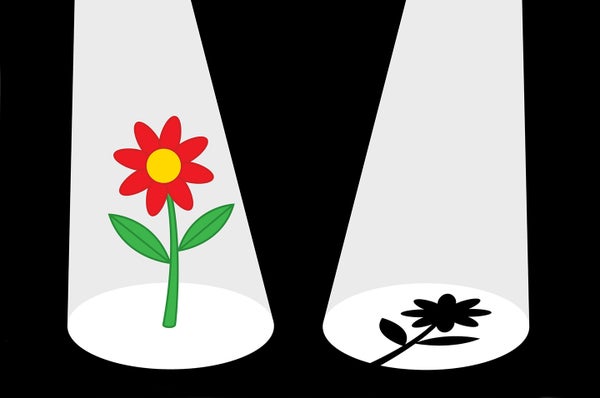September 18, 2024
2 min read
Quantum ‘Ghost Imaging’ Reveals the Dark Side of Plants
Entanglement lets researchers watch plants in action without disruptive visible light

Imagine you filmed a time-lapse video of a garden over the course of a year: you’d see details of flowers transitioning from day to night and season to season. Scientists would love to watch similar transitions on a molecular scale, but the intense light used to snap microscopic pictures of plants disrupts the processes biologists want to observe—especially at night. Writing in the journal Optica, physicist Duncan Ryan of Los Alamos National Laboratory (LANL) and his colleagues recently demonstrated a tool for imaging live plant tissues while exposing them to less light than they’d receive under the stars.
A technique called ghost imaging, first demonstrated in 1995, involves splitting a light source to create two different-wavelength photons at precisely the same time and location. The photons are entangled—a quantum phenomenon that allows researchers to infer information about one particle in a pair by measuring the other. Thus, a sample can be probed at one wavelength and imaged at another.
For plants, that means researchers can image the objects with visible-light photons and get knowledge about infrared photons that interact with water-rich molecules that are important to biological functions. To do so in the new study, the team directed a stream of infrared photons at a plant in a transparent box with a photon counter behind it while aiming the visible counterparts to those particles at an empty box at the same distance with a camera behind it. Each visible photon directed at the empty box hit a pixel and was detected in its precise location—a measurement that was much more precise than an infrared camera could achieve. Meanwhile the infrared photons traveled to the plant box, but not all of them were counted: the plant absorbed some percentage of photons at a given spot. A computer logged the position of a pixel only when a photon hit both the camera and the counter simultaneously. This way, the researchers could construct an image of a leaf of the plant using photons that never touched it, essentially forming an infrared image on a visible camera. “It’s like a game of Battleship,” Ryan says.
On supporting science journalism
If you’re enjoying this article, consider supporting our award-winning journalism by subscribing. By purchasing a subscription you are helping to ensure the future of impactful stories about the discoveries and ideas shaping our world today.
Ghost imaging has proved successful in capturing pictures of simpler test designs. But for low-light-transmission samples such as plants, microscopic features often differ in absorption by just a few percent. The trick lies in an extremely sensitive detector developed at LANL that tracks the arrival of each infrared photon with trillionth-of-a-second precision—letting them map leaf tissues and peer into live plants’ nighttime activities. “We saw [leaf pores called] stomata closing as the plants reacted to darkness,” Ryan says.
Ghost imaging “creates possibilities for long-timescale dynamic imaging that does not damage live samples,” says laser spectroscopy and quantum optics researcher Audrey Eshun of Lawrence Livermore National Laboratory, who calls the new investigation a “truly innovative study.”
Observations like these make it possible to track how plants use water and sunlight throughout their circadian cycle. “We’re watching plants react to their environment,” Ryan says, “and not to our observations of them.”

